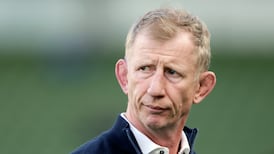World Rugby has announced a new long-term fixture harmony for Test matches, an agreement that will commence in 2020 and run until 2032.
Some of the primary initiatives include bringing the start date of Rugby World Cups forward to the second week in September, which facilitates a permanent and rigid place in the global rugby calendar.
Tours by northern hemisphere countries to their southern siblings will no longer take place in June. Instead they will be pushed back to the first three weeks in July, thereby allowing the completion of the Super Rugby Championship without interruption.
It will be interesting to see what, if any, knock-on effect it has for the Champions Cup and Guinness Pro12 tournaments. If they continue to have respective finals in May and tours to the southern hemisphere don’t begin until July, will players be given two or three weeks in June off or go into a holding pattern at national camps?
There is also a question about start dates for the European tournaments and Pro12. When the national squad players return from touring in late July, they are entitled to a month or so off, thus putting back the start of their pre-season training until late August early September.
Given the fact that the Pro12 has already complained about having to schedule fixtures in the Pro12 window they’re hardly likely to be enamoured with the fact that many marquee names would be missing for up to six weeks. The obvious compromise is a latter start to the league season and perhaps the rejigging of Champions Cup windows.
Pro12 Chief Executive Martin Anayi, Paul Goze of France’s LNR and Bruce Craig and Mark McCafferty, representing England PRL clubs were global meeting participants at the get-together to formulate the new in San Francisco in January so presumably they have a plan of action ahead of the 2020 commencement date.
The year after a Rugby World Cup, any tours to SANZAAR unions will comprise of two rather than three test matches. The November test series will now take place on the first three weekends of that month, bringing forward the starting date by seven days.
Emerging rugby powers will be integrated into the July and November test windows while there has also ben a commitment given that France and England will tour the Pacific Islands and that the USA, Canada and Japan will receive incoming tours from Tier One nations.
Georgia and Romania will host test matches from Six Nations participants in the July window. There will be a record number (110) of matches between Tier One and Tier Two nations during the period (2020-2032) an increase of 39 per cent.
Other commitments agreed included a proviso that world rankings “to determine inclusion of tier two teams in the schedule after Rugby World Cup 2019 and 2023 tournaments to ensure top emerging teams at the time are provided with tier one opportunities based on merit.”
Six Nations unions must collectively host a guaranteed minimum of six tier two fixtures in each November window. Where the Six Nations fits into the global fixture framework and dates for Lions tours will be decided before the start date.
World Rugby’s next meeting in Kyoto in May will examine Regulation 9 that governs the release of players for the test windows.
Global calendar meeting participants (San Francisco, January 2017): Bill Beaumont (World Rugby Chairman); Agustín Pichot (World Rugby Vice-Chairman); Philip Browne (IRFU); Ian Ritchie (RFU); Serge Simon (FFR); Steve Tew (NZR); Bill Pulver (ARU); Dan Payne (USA Rugby); Bruce Craig (day one) & Mark McCafferty (day two) (PRL); Paul Goze (LNR); Martin Anayi (PRO 12); Rob Nichol (IRPA); Brett Gosper (World Rugby Chief Executive); David Carrigy (World Rugby Head of Development & International Relations); Mark Egan (World Rugby Head of Competitions and Performance) and Martin Raftery (World Rugby Chief Medical Officer).















